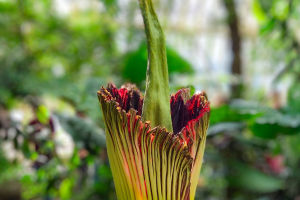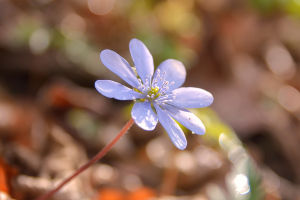If you've ever stepped outside after sunset and caught the scent of something unexpectedly sweet in the air, you might have walked past a night-blooming flower.
But have you ever wondered why some plants wait until the stars come out to put on their best show? It's not just a quirky trait—it's a clever, calculated adaptation shaped by survival.
Let's explore the fascinating world of nocturnal blooming, and why some plants save their most stunning moments for the moonlight.
Timing Is Everything: The Pollination Strategy
Unlike what many people assume, flowers don't bloom at night just for beauty or uniqueness. They do it because their preferred pollinators are nocturnal.
Moths and bats are key players.
In the absence of bees or butterflies, many plants rely on night-active pollinators like hawk moths or nectar-eating bats. These creatures use scent more than sight, so flowers that bloom at night often emit strong, sweet fragrances to guide their visitors in the dark. For instance, the moonflower and night-blooming jasmine produce powerful scents specifically designed to attract these nighttime helpers.
Less competition under the moon.
During the day, the air is busy with insects. At night, the competition for pollinators dramatically drops. Blooming at night gives certain plants exclusive access to nocturnal visitors without having to compete with dozens of other flowers open in the sunlight.
Survival in Harsh Climates
Night-blooming plants often come from dry, arid, or desert-like environments. For these species, blooming at night isn't just about pollination—it's also a response to extreme heat and water loss.
Cooler night air protects delicate flowers.
Opening flowers during the hot daytime hours can cause petals to wilt or dry out quickly. By blooming at night, plants like the desert cereus can preserve moisture and extend the life of their blossoms.
Reduced evaporation means energy savings.
Photosynthesis may happen in the day, but blooming at night helps desert plants conserve water. Since water loss through petals is lower at night, these plants stay healthier and reproduce more effectively.
Color and Scent Over Visual Appeal
Night-blooming plants are not usually the most colorful. But that's not a design flaw—it's a feature based on who they're trying to attract.
Pale colors reflect moonlight.
Since nighttime pollinators don't rely much on color, these flowers tend to be white or pale-colored. This makes them more visible under moonlight or starlight, helping moths or bats find them more easily. Think of the creamy moonflower or the elegant queen of the night cactus.
Scent does the heavy lifting.
These flowers don't waste energy on bright pigments. Instead, they invest in strong fragrances that can travel far in still, nighttime air. This is why you can often smell night-blooming jasmine before you see it.
The One-Night-Only Phenomenon
Some plants take it a step further by blooming only for a single night each year. This may seem risky—but it's a strategy that works surprisingly well in nature.
Synchronization attracts maximum pollinators.
When thousands of flowers bloom on the same night, they send a strong message to pollinators. This ensures a high pollination rate and increases the chances of seed formation.
A perfect example? The Queen of the Night cactus (Selenicereus grandiflorus), which only blooms once a year for just a few hours. It relies on its overwhelming scent and rare appearance to get pollinated in a single evening.
What Gardeners Can Learn
For those who enjoy gardening or plant-watching, understanding why some plants bloom at night adds a new layer of appreciation—and some practical tips.
Night-blooming plants add value to evening spaces.
If you often enjoy your porch, balcony, or garden in the evening, these plants are perfect companions. Their scent comes alive after dusk, and their subtle glow makes nighttime relaxing even more rewarding.
Choose locations wisely.
Because night bloomers attract specific pollinators, placing them near outdoor lights or quiet spaces helps you enjoy their scent while also giving them room to flourish undisturbed.
Hidden Wonders, Now Revealed
The next time you catch a sweet aroma after dark or see a pale blossom glowing in the moonlight, remember—it's not an accident. It's the result of millions of years of evolution, survival, and smart adaptations. Night-blooming flowers are nature's quiet performers, saving their beauty for those who take a moment to pause and notice.
So, here's a question for you: Have you ever grown or seen a flower bloom under the stars? If not, maybe it's time to let your garden whisper at night.


